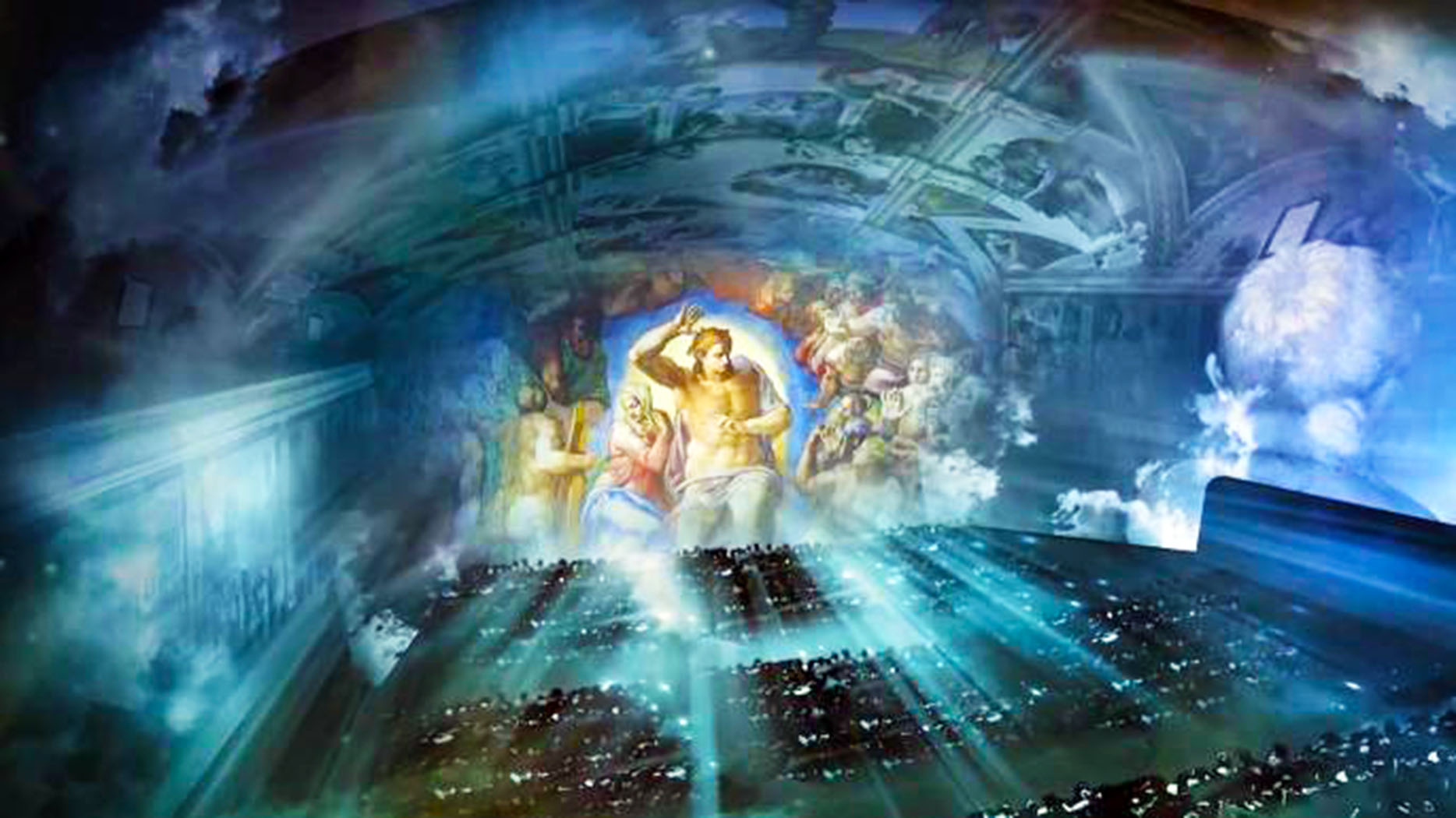The producer of the Rio Olympics opening ceremony, Venetian Marco Balich, recently premiered a new show in Rome’s former symphony hall about the history of the Vatican’s Sistine Chapel. “Universal Judgment: Michelangelo and the Secrets of the Sistine Chapel” features high definition photographs provided by the Vatican Museums, which are projected onto the stage, walls and ceiling of the venue. The producer calls this new project “artainment” and features characters from the paintings of the glorious chapel, as well as the main protagonists involved in its creation. Adam and Eve frolic in front of a close-up of a fresco of the Garden of Eden with plants climbing the walls toward the ceiling, while Noah’s Ark heaves in a stormy deluge that soaks actors on stage.
Using the techniques learned during his Olympic experience, Balich makes audiences feel as if they are sitting in the middle of the iconic chapel. The show starts with blocks of rough marble sliding mysteriously around the stage, before Michelangelo appears revolving around the unhewn rocks, until a sculpture emerges from the grey mass. Next comes Pope Sixtus IV (1471-1484), who had called upon the great artists of his time, such as Perugino, Botticelli and Ghirlandaio, to paint and restore the medieval chapel that would eventually be named after him.
Then in 1508, Michelangelo is summoned from his hometown of Florence to paint the ceiling of what we now call the Sistine Chapel, at the request of Pope Julius II. Just 30 years old and up to that point a sculptor, Michelangelo recoils at the madness of having to paint one thousand square yards, despite having no knowledge of fresco painting techniques. Three decades later and another patron, Pope Clement VII, calls him back to the chapel to create his most famous fresco – the Last Judgment.
The show also includes music written for the show by Tuscan resident Gordon Sumner, better known as Sting and sung in Latin by the British pop star, along with 16 minutes of narration approved by the Vatican. After two and a half years of work and nine million euros of public funding, Balich hopes his gamble pays off by creating a show that will endure, perhaps for only a fraction of the time Michelangelo took to paint the ceiling of the Sistine Chapel.





